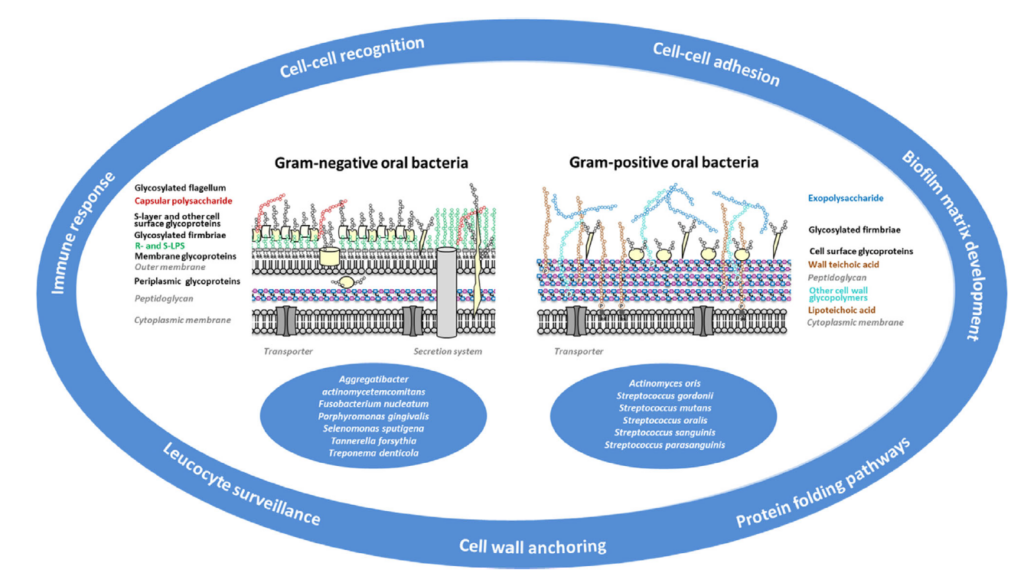The oral cavity is home to a diverse and dynamic bacterial biofilm community that is central to maintaining oral health and, if dysbiotic, can contribute to various diseases. As unmatched carriers of biological information, glycans are involved in the underlying processes that shape oral health and disease. The bacterial glyco-infrastructure – comprising compounds as diverse as glycoproteins, lipopolysaccharides (LPS), cell wall glycopolymers and exopolysaccharides – influences bacterial fitness. It directly affects bacterial physiology, immunogenicity, lifestyle, interaction, and colonisation capabilities. Understanding the glyco-infrastructure and encoded glycol language of oral bacteria is, therefore, key to elucidating their mechanisms of pathogenicity and developing targeted strategies for therapeutic intervention.

LPS has been the focus of most research in oral glycobiology because of its known immunological role, but more recently glycoproteins have been the subject of increasing interest. This review provides a multifaceted picture of the glycolanguage, with a focus on glycoproteins manifested by prominent oral bacteria such as streptococci, Porphyromonas gingivalis, Tannerella forsythia and Fusobacterium nucleatum. After defining the characteristics of the different glycoconjugate classes, the authors summarise the current knowledge on the structural diversity of oral bacterial glycoconjugates, describe the dominant biosynthetic pathways and list the biological roles of these energetically costly compounds. In addition, the review highlights emerging research on the unravelling impact of the oral glyco-infrastructure on dental caries, periodontitis and systemic diseases. By synthesising the current state of knowledge and identifying knowledge gaps, this review underlines the importance of studying the glyco-language spoken by oral bacteria to advance our understanding of oral microbiology and the development of novel antimicrobial agents.




